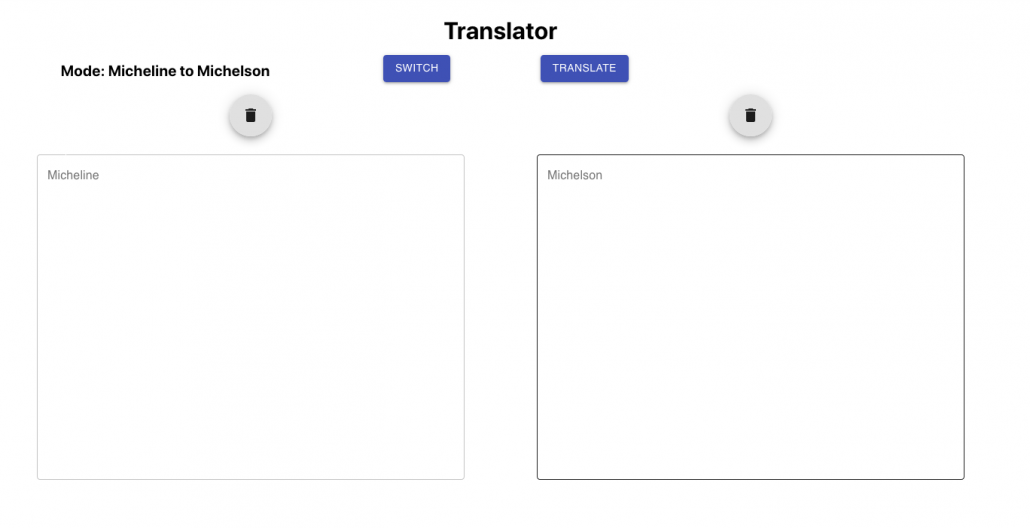
We hAkked Tezos! …and created a Micheline Michelson translator

Cryptonomic NYC Hackathon part 2
The idea
It was the first time I’d ever taken part in a hackathon. I hadn’t been to any of these events before because I was very skeptical about them. I thought: how can we make anything useful in only two days? Well, it turns out that small, but handy tools can be created, even without sacrificing code quality. The key is to choose the right project; not too big or too complicated so you can complete it within a weekend. In our case, it was a Micheline Michelson translator that I’m going to tell you more about in this article.
The hackathon
Our hackathon took place on the first weekend of August (03-04.08). Cryptonomic is a startup which provides tools and smart contracts for decentralized and consortium applications. We had to use the Cryptonomic technology stack, tools such as ConceilJS (https://github.com/Cryptonomic/ConseilJS) during the hackathon. We decided to create a Google-like translator between Michelson and Micheline; two formats of source files used in Tezos software development.
What are Tezos and Michelson?
According to the Tezos website:
“Tezos is a new decentralized blockchain that governs itself by establishing a true digital commonwealth.”
“Tezos addresses key barriers facing blockchain adoption to date: smart contract safety, long-term upgradability, and open participation”
Michelson is a domain-specific language that we use to write smart contracts on the Tezos blockchain. Unlike Solidity or Viper which must be compiled to EVM (Ethereum Virtual Machine) byte code to be executed on EVM, Michelson code itself gets to run in the Tezos VM.
Micheline vs. Michelson
First of all, Michelson is the specification and Micheline is the concrete language syntax of Michelson encoded in JSON. Before deployment to Tezos VM, Michelson is transformed into Micheline.
For example, here is the same program in Michelson and Micheline representation:
Micheline
parameter int;
storage int;
code {CAR; # Get the parameter
PUSH int 1; # We're adding 1, so we need to put 1 on the stack
ADD; # Add the two numbers
NIL operation; # We put an empty list of operations on the stack
PAIR}
Michelson
[
{
"prim": "parameter",
"args": [
{
"prim": "int"
}
]
},
{
"prim": "storage",
"args": [
{
"prim": "int"
}
]
},
{
"prim": "code",
"args": [
[
{
"prim": "CAR"
},
{
"prim": "PUSH",
"args": [
{
"prim": "int"
},
{
"int": "1"
}
]
},
{
"prim": "ADD"
},
{
"prim": "NIL",
"args": [
{
"prim": "operation"
}
]
},
{
"prim": "PAIR"
}
]
]
}
]
As you can see, there is a clear correspondence between Michelson and Micheline representation. Despite this, many people still find it challenging to understand the difference between Michelson and Micheline. That’s why our team decided to create this translator. Above all, we hope it is going to help other developers to learn smart contracts development in Tezos.
The Technology stack
To create our Micheline Michelson translator, we agreed to use Scala and Akka http for the backend side. At the frontend side, we used React, Redux, and Typescript.
The Coding
A conversion between the two formats is already a part of Cryptonomic tools. So, we needed to extract it from the base source code. After that, we decided to create a separate module for conversion which, we could then import into other projects, so as not to duplicate code.
A Micheline to Michelson translation has already been implemented in Scala using Circe, so it was quite easy to integrate it into our Scala-based project. However, the Michelson to Micheline conversion code is JavaScript. We tried to come up with our own Scala parser for Michelson. Unfortunately, it was too time-consuming, and we finally decided to use a parser from ConceilJS. We also chose Node.js for running the JavaScript code.

The Solution
In short, our solution consists of one frontend and two backend modules.
Frontend module:
https://github.com/ScalaConsultants/Tezos-Micheline-Michelson-Translator-Frontend
Translation module:
https://github.com/ScalaConsultants/Tezos-FullStack-Console-Translation-Module
Console backend:
https://github.com/ScalaConsultants/Tezos-FullStack-Console
(There’s more detailed information about the modules in the Readme files, so there’s no point in duplicating the text)
Also, our team selected Heroku as the deployment platform.
Final application
You can try out our solution here: https://smart-contracts-micheline-michelson-translator-for-tezos.scalac.io/
On the left side, you paste the Micheline code and click translate to see the result. That simple!
The experience
In conclusion, it turns out that over only two days, it’s possible to create a small yet beneficial application. It was also an excellent opportunity to learn about some Tezos development tools.
The Micheline Michelson translator was one of two projects that by Scalac. Check out the Frontend data visualization app that the other team made.
Read more










